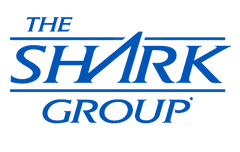Interview by Londell Mcmillan
LONDELL: Hey, Dame. Happy New Year my brother!
DAYMOND JOHN: Happy New Year, how you doing bruh?
LONDELL: I’m doing good, man. I’m glad to be here in the ’09.
DAYMOND JOHN: Aw man. It’s rough out there though.
LONDELL: It’s rough in a couple of ways: economy, cold…
DAYMOND JOHN: Yeah.
LONDELL: We got a Black president so hopefully, you know…
DAYMOND JOHN: Thank God for that.
LONDELL: The economy is really, really bad.
DAYMOND JOHN: Man, I just fired 30% of my staff yesterday.
LONDELL: How many?
DAYMOND JOHN: Thirty percent.
LONDELL: Wow.
DAYMOND JOHN: I had to tell another 70% that they got to take a 10 to 20% [pay] cut.
LONDELL: Just so you know, there is a young lady that is an intern… I’m actually at my apartment, but she’s taping so that we can actually transcribe it and make it really nice. And then it’ll get editted and they’ll make it really special in the Business to Business. So obviously what we were talking about won’t go in. Whatever’s not necessary doesn’t go in. Like this conversation.
K: Excuse me, Londell.
LONDELL: Yes.
K: It would really help if you all could speak a little bit louder because I can’t put it too close to the phone. Otherwise, it will get a lot of feedback.
LONDELL: Okay.
K: So if you all can speak loudly and clearly it would be really great because we don’t want to have any problems in transcribing it, misquotes, or anything like that.
LONDELL: Will do.
K: Thank you so much.
LONDELL: How are you?
K: I’m good. How are you today, sir?
LONDELL: Good. You coming with us to D.C.?
K: I’m not old enough to.
LONDELL: Damon, we got a bus wrapped and we’re taking a busload of people [to the Presidential inauguration], so if you know some people that want to go down to D.C…
DAYMOND JOHN: When you guys heading out there?
LONDELL: I’m headed out there tomorrow morning because I have to be there early, but I think the bus is leaving Monday. I’m going down…
DAYMOND JOHN: Right.
LONDELL: We got DJs on the bus.
DAYMOND JOHN: Big party bus, huh?
LONDELL: Yeah, it’s a big party bus. But, one, before we get into the business interview I just want to make sure that we… See if we can get together man. Not only just get together and just rap, but kind of link and stay together. I would just love for us to speak regularly and just start to build because there are a lot of things that we can work on. And even some of the things you’re doing with financing. There are a lot of financing resources that you may or may not be interested in.
DAYMOND JOHN: I definitely would love to do that. We can do that like this week or the following week. I’m actually in a meeting now. I need somebody out there that’s doing 20, 30 million. We can strategically start bringing them in. We can just start helping them because their finances are strapped, or you know the creditors aren’t really freeing up credit for these guys. And you know we have a system over here where I need to start bringing in some more situations so I can start saving more people.
LONDELL: You talking about bringing some capitalization in?
DAYMOND JOHN: No, I have cap. We’re great with Samsung; we’re underwritten by Samsung. We have a 2 bil— $4 billion order. I can ship it. When it gets a euro-company, you’re doing $20 million, but CIC and Republic, these guys are not giving you credit for [that]. Your financing is costing you 20%. Coming to our system, we ship, give you the whole back office and we can start splitting up some of that money.
LONDELL: Right. So are you looking for retail targets that might actually want to get a strategic partner or get acquired?
DAYMOND JOHN: Basically, I’m being offered a lot of apparel lines right now. These guys are maybe doing $5 billion, they’ll offer me half the company just to ship them and staff them. But $5 billion is not enough.
LONDELL: Right.
DAYMOND JOHN: I need guys that are doing 20 [million] to come aboard. [Then] We make them one of our divisions and work it from there.
LONDELL: Right. Okay.
DAYMOND JOHN: So you’re the dealmaker….
LONDELL: Well, I know a lot of people out there. Once out there, I just connect dots.
DAYMOND JOHN: Anywhere from 20 to 50 million. I would love sneakers, but that’s another brand. I really don’t necessarily need urban brands either, because I got two number one brands in the country and that’s hard as is.
LONDELL: Crown Holder and Coogi?
DAYMOND JOHN: Coogi’s like number two. Crown Holder is like number 6. And it’s still tough out there because stores ain’t got no credit. I need to acquire a sneaker company and/or a white boy jean company, something to the left.
LONDELL: Right. Do you know my boy George, you know Crazy George right?
DAYMOND JOHN: I don’t know who you’re talking about.
LONDELL: Well, you know what… What I think we’ll do is maybe hook you up with an investment banker in the retail area that’s already looking for companies that’s looking for that kind of resource. But we’ll talk about it…
DAYMOND JOHN: Yeah.
LONDELL: Do me a favor if you can go on dl.com, which is my law firm. You’ll see the range and the scope of services and clients that we have. And it’s just really a function of tapping you into those resources, but you already seem to have the capital, but you’re just looking for the right target lines to do business.
DAYMOND JOHN: Yeah, capital right now is good. What we need now, the reason we want to bring them in is to get cash flow [optimized].
LONDELL: Right. And it’s only wholesale/retail apparel that you’re looking at? You’re not looking at any other business?
DAYMOND JOHN: Only wholesale/retail because we’re part of the staff and textile division, and that’s all part of the same warehousing and financing. We don’t want to go into food [for example]. It’s a pain with all that other stuff because that’s a whole other division.
LONDELL: Right. And you’re saying Samsung?
DAYMOND JOHN: Samsung underwrites us, yeah.
LONDELL: Okay. Alright, so we’re getting ready to go.
DAYMOND JOHN: Alright. Let’s rock.
LONDELL: Well, Happy New Year’s to you my brother.
DAYMOND JOHN: You too.
LONDELL: This is a Business to Business interview where the focus is to have a real conversation, but on a personal level, colloquially, but on a high level in terms of substance. To let people know the people behind the business, how they got to where they are, what motivates them, what they read, what they like — it’s almost a motivational guide to helping people understand business, whether it’s the consumer electronics business, the fashion business, the music business, or all of the businesses that impact Hip-Hop. So I think to start it off for you, I think the best thing is to have us describe the type of businesses that you are involved in and we can just take it from there.
DAYMOND JOHN: Okay. Well, between me and you, I don’t know how many names I can divulge, but I can give you the categories.
LONDELL: Okay.
DAYMOND JOHN: Then, go deeper. And I can tell you how and I can talk about first and foremost of how I got into the business and what I do on a daily basis, which is apparel and fashion. Obviously, FUBU was my entry into the business and I still run FUBU.
LONDELL: When did you start FUBU?
DAYMOND JOHN:I started FUBU in 1992.
LONDELL: What inspired you to go into apparel and start FUBU in the first place?
DAYMOND JOHN: First of all, I was frustrated by Timberland, and a couple of other people and brands that “didn’t make clothes for African Americans.” That was why I initially created FUBU. It was my love of fashion as well and my love for music. And I felt that no longer did we have to have the “make it and they will come theory” like other designers. I was a designer who actually respected the community I was selling to, and it was fun. It was an exciting time. Hip-Hop was young and fresh and I was just happy to wear the clothes that I was making as well as seeing artists and other people wear the clothes that I was making for them.
LONDELL: One of the unique aspects of FUBU was that you saw in the marketing of the company the actual owners, and the owners looked like us. How did that come about?
DAYMOND JOHN: Well, you know, I walked into a store one day and I looked at a hangtag. Honestly, I saw Karl Kani in there and he looked at me like a crazy, little, young Mike Tyson. And he just hit me in the head like, “Yo! Dude look like me.” So I’m not gonna sit there and try to get all the glory from the situation. I looked at him and then said to myself, “We’ll put out the clothes.” I wanted to put out clothes on the hangtag because I didn’t want to be that one designer who thinks he knows everything. And if I want to put ruffle sleeves on everything one year, I’m mad at everyone else because they don’t want to wear it. So I’m gonna compile three of my friends — we all have different tastes and we all feel different products is hot — [and] we’re gonna put it out. And then I put all three of my friends on there with myself; it was four of us and we just took that shot. And then there was our testimony of why we were doing it on the back of it and that actually became what they called the “Mount Rushmore shot.” I shot the thing in my basement and wasn’t even trying to think of it like that, but it just kept going.
LONDELL: So initially you say that you just found your friends and they became your partners? Back then, how did you select your partners?
DAYMOND JOHN: Well, back then we were all moving in units. There were guys that were better at sales, better at getting their grind on or just better at just delivering the product. We went through several partners. It would be five at one time, then it would be three, and there would be whole different sets for about two or three years, consistently. These guys would either put in money, they would work during midnight to 5am, or they would… Whatever I needed them to do, they would do. And they also would respect the chain of command. When people respect your chain of command and there is no money at hand and they’re just doing it for the love, [only] then I felt that I could trust them in moving forward.
LONDELL: How about now? Is there any difference in how you go about selecting your partners?
DAYMOND JOHN: Absolutely. Now, we try to select a few, but now when acquiring a company, I want to know that I’m getting a partner that already put in that blood, sweat and tears for a long period of time. And I know that person is gonna make the right judgment calls and that person also has a healthy balance of talent as well as a business understanding, because you can pick the wrong partner from both sides. If you pick a partner that’s talented, but doesn’t know business you’re in trouble and, obviously, vice versa. We like people who have already put in a good amount of work in the business. They understand it and we can trust them.
LONDELL: Well, it’s good you said that because I was gonna ask you what are the top criteria of a good partner in a power business. But, what do you think of the state of apparel and fashion business now? And is apparel different from the fashion business? I mean you hear the terms used almost interchangeably, are these two terms the same?
DAYMOND JOHN: If you go to the common denominator there are two different reasons why people buy apparel and what separates apparel from fashion. Apparel is the need for something. That means that you know you need a t-shirt and you don’t care what it says on it. All you’re doing is buying it for the purpose that it’s a long sleeve, it’s white, it cover your body and it’s functional. And that is how we break down apparel. Fashion is the element of design. You’re buying it for desire. You’re desiring the way it makes you feel, or the way it makes somebody else feel, or the color, or the fit or something else that is on and beyond just the need of covering your body.
LONDELL: So how has Hip-Hop influenced both the apparel and the fashion business?
DAYMOND JOHN: I think that Hip-Hop has definitely influenced both. Because if you go with just times like now we’re in a recession, or in the past, you’ll find that Hip-Hop would change and people would dress down. Or you look at the war, people would start wearing more army fatigue and apparel products in the video and that would obviously throw gasoline on the sale of apparel products. It basically makes it okay to wear product without the logo. But in regard to fashion, Hip-Hop and fashion have always worked one another. You come to fashion companies as an artist to cut out and define who you are and by the certain products you wear and by the certain fashion you wear. And fashion also tried to define the certain artists that wear it. So we have a symbiotic relationship when it comes to those relationships.
LONDELL: So can you share for the readers the best way for them to enter into the apparel/fashion business?
DAYMOND JOHN: The best way for the reader to enter the apparel/fashion business is this: you have to have a concept, and once you have the concept, you have to create the product. I’m not saying that you have to create it from a manufacturing standpoint — one shirt, two shirts, four shirts, whatever it is. You have to start a movement, you have to start selling the shirts or giving the shirts away within their community. And now we have things like MySpace, Facebook and YouTube where you can start getting more of a gauge of whether a product is hot or not. Once they start giving away the shirts and selling it to a select amount of people in the community, they need to then get the true acid test, which is try to sell it to a store and let a stranger who knows nothing about you [sell on your behalf]. This is not Aunt Betsy who wants to support you, this is not your man who you gave the product to and he just wants to come back and say, “Yo, everybody loves it, give me more.” You want a total stranger to start buying the product. Once that happens, you flip that money and basically start doing that again and again until you create a movement where the store itself is selling the product and re-ordering. And that way, simultaneously, you will start putting it on whomever you can —artists, your local fashion shows, your local community church. You have to get to a point of putting in that amount of work where it starts getting on the gauge of people who have real companies. And then you start going out and looking for strategic backing.
LONDELL: Okay. That’s great that focus is on the, I guess, creator and the founder of the business. But what are some of the more important behind the scenes employment opportunities in the apparel/fashion business?
DAYMOND JOHN: Behind the scenes, that’s the second way of getting into the business, to get a position in a company and become a superstar. Obviously, you have to learn the structure and people want to offer you positions. Now there are several positions. There is technical design: this person is the one that takes a shirt, or any product, and breaks it down to where it can be tapered and sent over to Asia or where ever and the person over there makes the product. The zipper pull is four inches, three inches from the pocket, the inseam is 37 inches — that’s technical designing. They basically and technically, make a blueprint to whatever design exists. You also have pattern cutters, who actually cut out a pattern to make garments. You have designers who work on computers and make designs out of their mind. There are two types of designers: the ones that design fashion and the ones that design graphics. And those are basically all the behind the scenes [jobs] until you start getting to the high-end designers.
LONDELL: What about on the sales and business side?
DAYMOND JOHN: From the sales and business side, you always have to have a sales staff who knows how to call buyers, knows how to break down the understanding of a product as well as if you see a buyer and they have 200 sq. ft. in a store and they have four of what we call t-top racks, where you see the shirts hanging off. You know how many pieces can fit there, you know how m
















